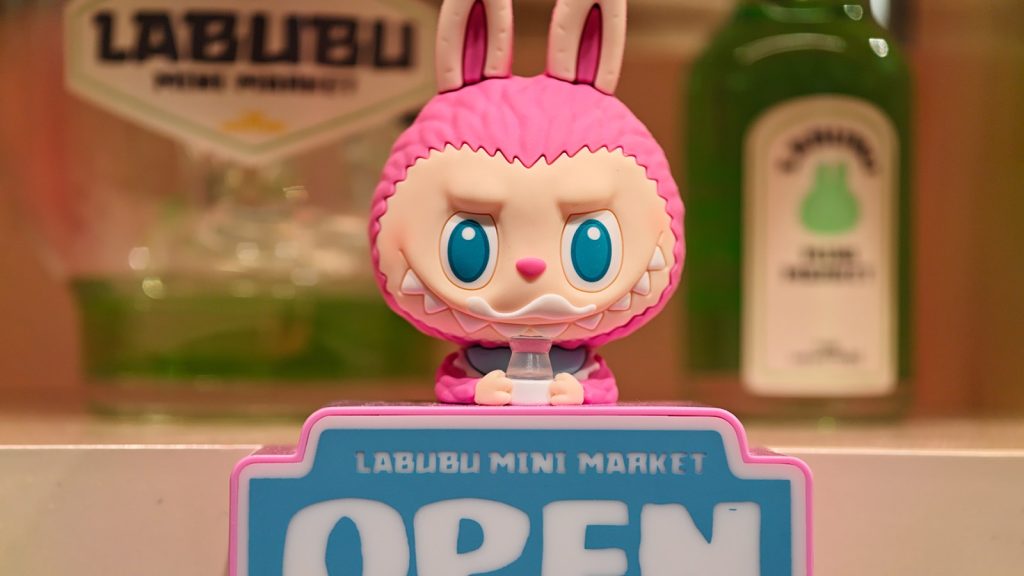A massive, digital “how-to” economy has sprung up seemingly overnight, all centered around this summer’s hottest accessory: a small, plush monster hanging from a keychain known as a Labubu.
Legitimate versions of the bunny-eared, snaggle-toothed, elf-like plushies (based on a character inspired by Nordic fairytales), made to be hung on pocketbooks, off beltloops, or from a car’s rearview mirror, are hard to come by. If you’re looking for the real thing — and you don’t want to deal with the inflated second-hand market — you’ll have to go through Pop Mart, the Chinese company that manufactures them. But you can’t just walk into a store or buy them online. In order to get one, you have to be online when they have one of their regular “restocks,” and supplies usually sell out within minutes. Either that, or you can play the Pop Now game, where if you’re quick enough, you can win the right to purchase one.
That scarcity, and the toys’ adoption in the fashion, music, and LGBTQ+ communities, have driven the demand for Labubu to heights reminiscent of the 1990s obsession with Beanie Babies. The people who have cracked the code on how to buy them at face value are garnering hundreds of new social media followers, teaching the rest of us, who may have Lafufu’s (bootlegs often sold in bodegas or on sites like Shein) or can’t afford to spend hundreds of dollars on reseller stock on eBay or StockX, how to join in on the fun.
“My Labubu content performs very well,” says Linda Stahl (@SleepySpoof on TikTok), who bought her first Labubu for $25 on Japanese marketplace app Mercari early this year. “I joined Discord communities and watched TikToks to understand the restocking concept. Every time I post an updated method on TikTok, people love it.”
Expert Labubu buyers like Stahl have put in hours of research to hone their craft, swiping back and forth on the official Labubu retailer app into the wee hours of the night to secure more of the fuzzy little monsters. And with Pop Mart constantly changing the rules and regulations for buying a Labubu through its gamified Pop Now feature, content creators must update their tips and tricks consistently.
It feels eerily similar to video game websites offering guides to those struggling with the latest Super Mario game — except it’s IRL toys being bought with very real money.
The gamification of Labubu
Getting a Labubu at face value feels like winning a game, especially when the rules are always changing. To nab one, you have to log onto the Pop Mart app at the exact right time — many Labubu experts believe Pop Mart restocks the little monsters on Thursday evenings, and from my research, that appears to be the case. Then you’ll have to navigate a series of hurdles that require you to know your way around a smartphone or tablet (effectively removing boomers from the buyer’s market) and have both mountains of patience and lightning-fast reflexes.
Potential Labubu buyers can (and often do) encounter speed bumps during this process: The app can crash, you can get locked out for clicking too swiftly through the storefront, or you can watch helplessly as an available Labubu disappears before your eyes. Many have spent hours trying to buy one, to no avail. Or, enterprising collectors have hoovered up half a dozen Labubu, just to find out at check-out that none of them are the colorway they want (the plushies are sold in blind boxes, requiring you to pay before digitally opening them up to reveal what’s inside).
Earlier this month, Labubu catchers had figured out a “URL trick,” or hack, which requires you to use a web browser (not the app), copy the Labubu URL, add an item’s box number to the end of that URL in the browser bar, then replace the four middle digits with random numbers. The results were reportedly full sets (six boxes) of Labubu available to purchase immediately. The glory of securing so many in one go was short-lived, however, as PopMart quickly made changes on the site’s back-end to prevent the trick’s use.
Learning the Labubu ways
Stahl had never heard of Pop Mart before getting into Labubu, but she now owns over a dozen. She says the digital storefront has undergone major changes within the last year, all of which require Labubu buyers to switch up their approach regularly. It feels, in many ways, like a live-service video game that regularly tweaks its gameplay or adjusts its character roster, requiring players to adjust their playstyle in order to succeed.
“In the beginning, there were no set drop times and no pre-orders,” she explains. “There was a 15-minute timer [to keep a Labubu in your cart] that you could refresh. I would sit there and wait for it to count down and furiously tap the grey locked box.”
She discovered a method on TikTok “where you use one thumb to tap and one thumb to click randomly on a part of the box.” She adapted this technique to better suit her style (much like a gamer would) and began “scoring” Labubu with ease. PopMart has since made the “two-thumb” method nearly impossible to pull off — using both fingers on the screen may accidentally mimic the movement of a bot, and the app will ban you from using it for an undisclosed period.
Stahl sees her TikTok content as a personal duty, a way to help spread the Labubu wealth. Though it’s unclear if PopMart is purposefully keeping Labubu stock low to increase demand (the company did not reply to a request for comment), she believes that PopMart is “much better at making sure everyone gets one now” because of the barriers put in place to prevent bots from snatching all of the stock up.
However, content creators like Stahl acknowledge the inherent competitiveness of nabbing a Labubu and seek to push that boundary through new methods and tactics. And almost every Labubu lover understands the inherent coolness factor, the status symbol, of securing a genuine version of the toy by the sweat of your brow.
“Times are tough and we are all looking for a way to fit in, and people like to join in on what’s cool,” Stahl says about her quest to ensure people don’t have Labubu FOMO. “It gives me a serotonin boost! There is so much going on in our world today that is sad, so having some sort of happiness is nice.”

